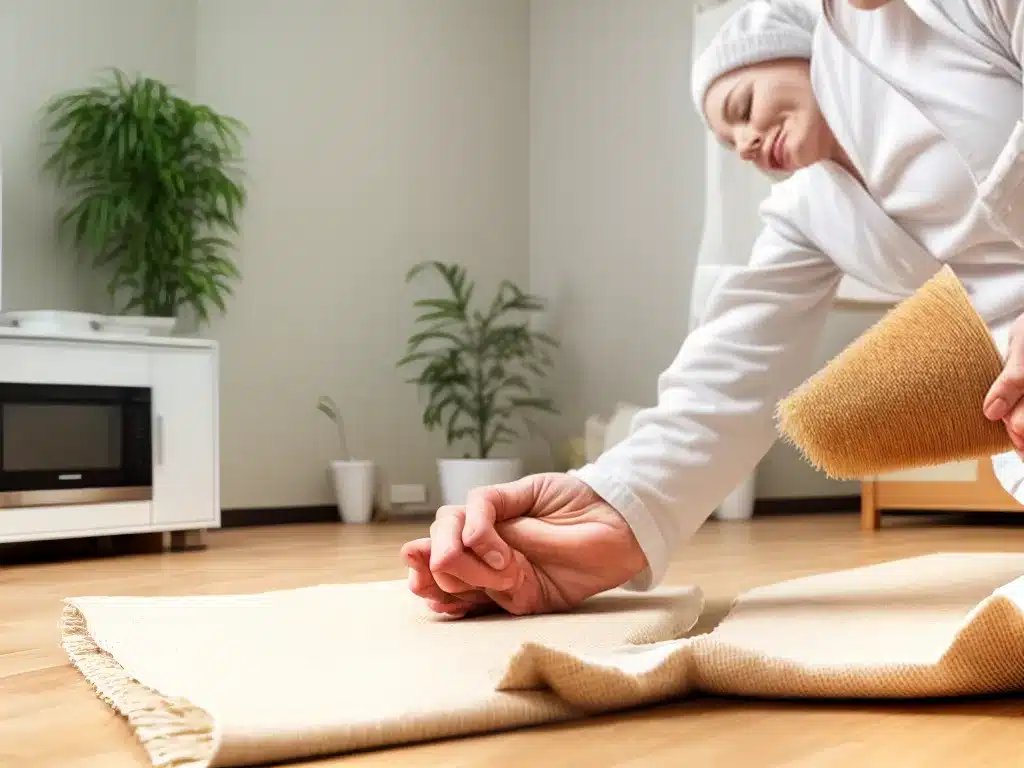Introduction
Making your home a healthy place is important for you and your family’s wellbeing. Allergens in your home can cause issues like sneezing, coughing, itchy eyes, and asthma flare-ups. By taking steps to reduce allergens, you can create a healthier home environment. In this article, I will provide tips on identifying common allergens and share strategies for eliminating them from your home.
Identify Potential Allergens In Your Home
The first step is understanding what allergens may be present in your home. Here are some of the most common household allergens to look out for:
Dust Mites
These microscopic bugs live in fabrics like bedding, upholstered furniture, curtains, and carpets. Their droppings can trigger allergic reactions. Dust mites thrive in warm, humid environments.
Mold
Exposure to mold spores can cause issues for allergy sufferers. Mold grows in damp areas like basements, bathrooms, and around leaks. Mold needs moisture to proliferate.
Pet Dander
Skin flakes, saliva, and urine from pets contain proteins that can cause allergic reactions. Cat and dog dander are common culprits. Dander gets transferred around the house and sticks to surfaces.
Pests
Droppings and body parts from pests like cockroaches and mice can trigger allergic reactions and asthma. Pest allergens get circulated through the home via HVAC systems.
Pollen
During certain seasons, pollen from trees, grasses, and weeds makes its way indoors. For those sensitive to pollen, this can cause allergy and asthma symptoms. Pollen enters through open windows and doors.
Irritants
Common indoor air pollutants like smoke, strong-smelling cleaning products, and scented candles contain particles that can irritate lungs. Respiratory irritants worsen allergy and asthma symptoms.
Strategies For Removing Allergens
Once you know what you are up against, you can take steps to remove allergens from your home’s environment. Here are some effective tactics:
Use Air Purifiers
Investing in high-efficiency particulate air (HEPA) purifiers for your home can help filter out allergens. Place air purifiers in bedrooms and main living areas. Make sure to change filters regularly.
Wash Bedding Frequently
Bedding collects dust mites, skin flakes, and pet dander. Wash sheets, pillowcases, and blankets weekly in hot water to remove allergens. Consider using dust mite covers for mattresses and pillows.
Clean Often
Vacuuming, dusting, and cleaning surfaces like countertops helps remove allergens like dust and dander. Use a vacuum with a HEPA filter. Clean frequently to prevent buildup of allergens.
Limit Clutter
Clutter collects dust and allergens. Keeping surfaces clear makes cleaning easier. Store items like books, papers, and knickknacks in enclosed bins. Having less around also means less for allergens to stick to!
Manage Humidity
Monitoring indoor humidity helps deter mold and dust mite growth. Use dehumidifiers and air conditioners to keep humidity below 50%. Ventilate kitchens and bathrooms when showering or cooking.
Avoid Irritants
Preventing exposure to smoke, strong scents, and other respiratory irritants is key. Don’t allow smoking indoors. Use unscented laundry detergent and cleaning products. Limit use of candles and air fresheners.
Keep Pets Out
If a pet is a major allergen source, restrict access to bedrooms and main living spaces. Bathe pets regularly to control dander. Have someone without pet allergies brush and play with them outdoors.
Check For Leaks
Inspect your home for water leaks which allow mold to grow. Check under sinks, near windows and basements. Repair leaky faucets, pipes, and roofs promptly. Dehumidify damp areas.
Make It A Habit
Creating an allergen-free home takes diligence. But turning practices like regular cleaning and washing bedding into habits can help. Simple daily steps can reduce allergen exposure significantly. With some preparation, you can transform your home into a healthier place for you and your family!







